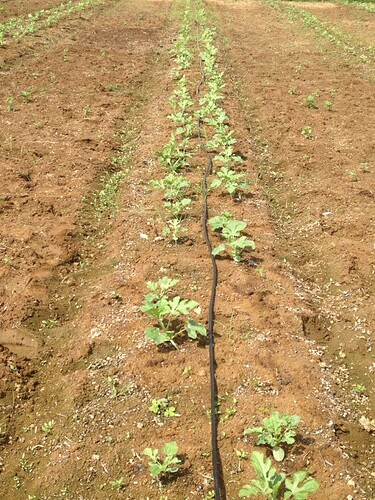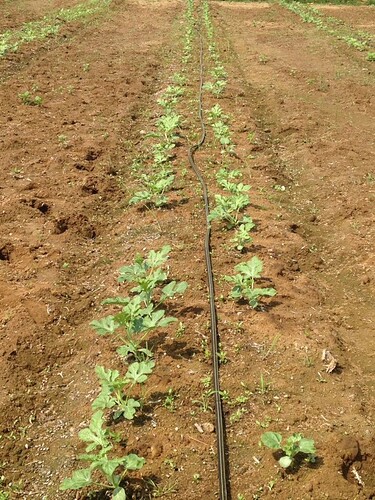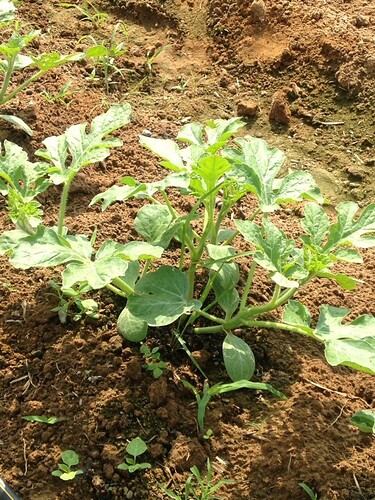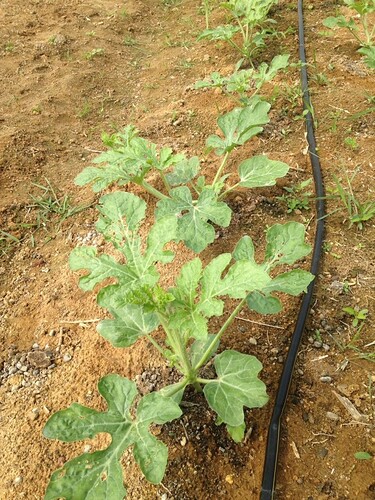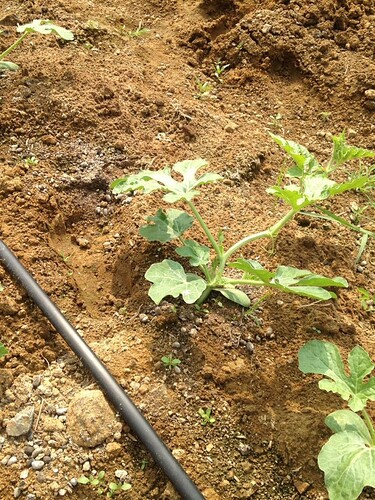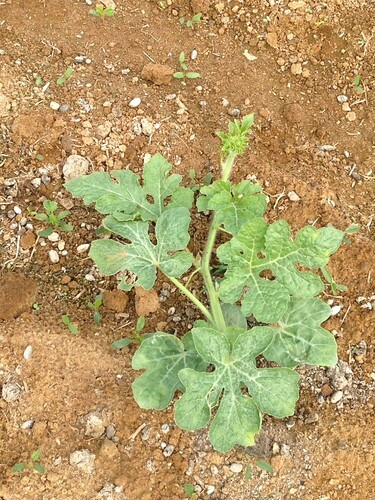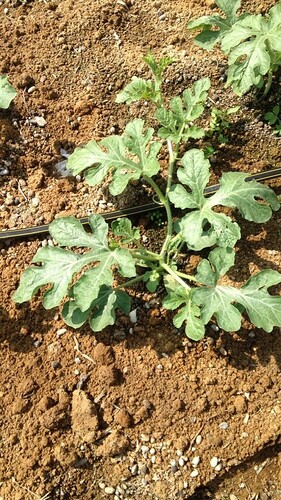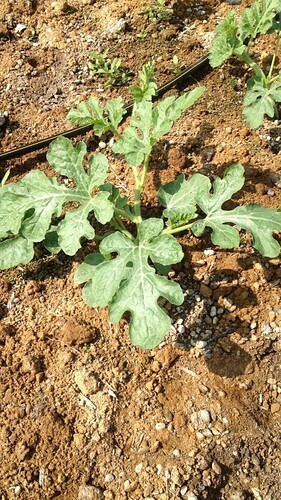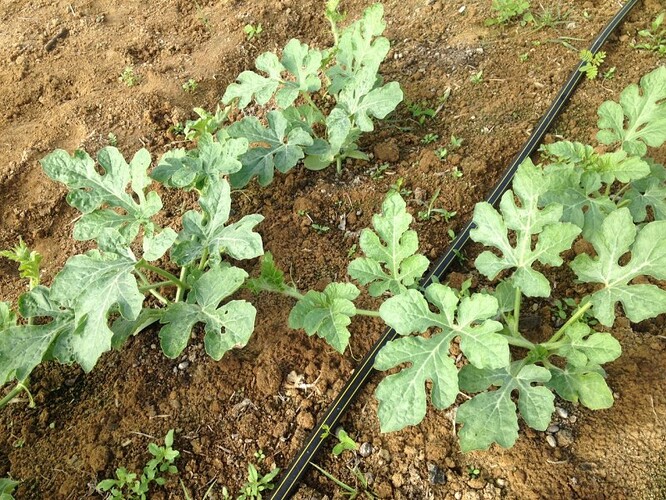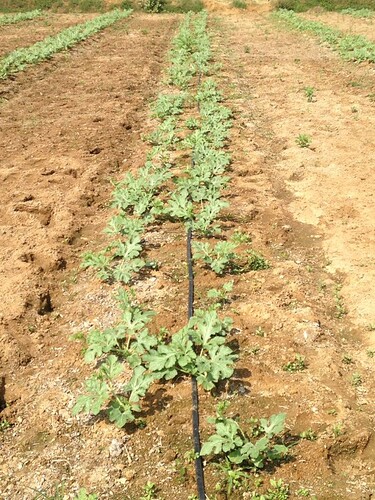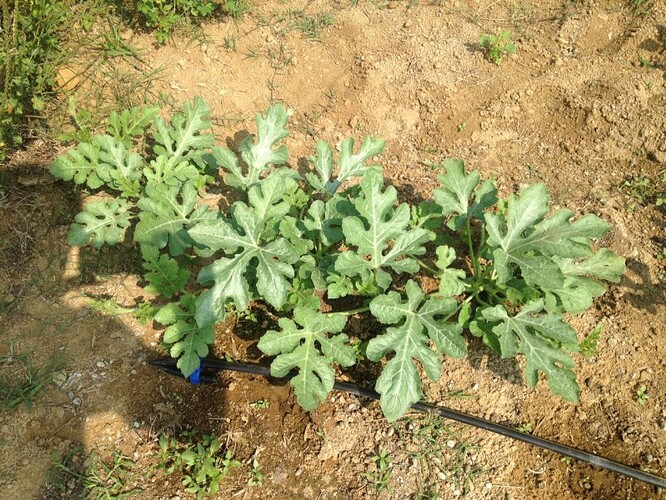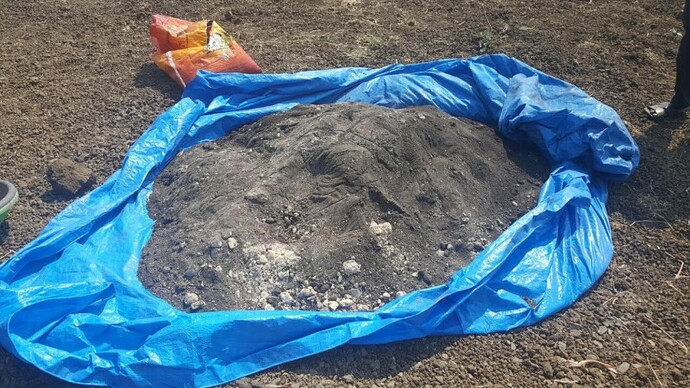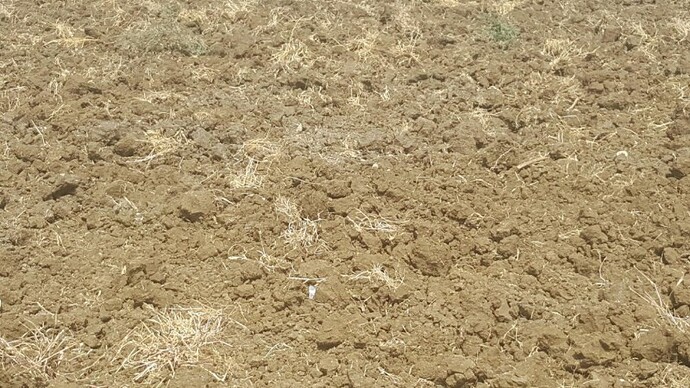Dear Mr.Azhar
I understand your concern about pest control using synthetic chemicals that are poisonous .
Generally watermelon grows well in warm climate meaning less atmospheric humidity . It is the reason why the watermelon succumb to high humidity and heavy rainfall and finally die .
So spraying is recommended in the morning hours . so the rising sun will not allow micro climate build up around foliage
Excess humidity is the reason for development of fungal and bacterial disease in watermelon . If you undertake spraying in the evening hours around 4-5 PM when the sun is low in west , then the spraying will definitely build up humidity and ensuing night will aggravate the situation …
Further when the watermelon starts producing flowers , the bees would make visit to flowers that last from 9-11 AM . At this time you can not do spray in the morning hours as it will kill bees and hinders pollination . Since watermelon is a multi seeded fruits , it needs around 15-20 visit of bees to produce well developed fruits or else it produces mishappen fruits
Considering this situation , spray is undertaken in the evening hours necessarily with fungicide mixed in the spray fluid along with insecticide . Only contact fungicide is used and systemic fungicide is avoided unless the situation warrants use of it
First we should understand the difference between mode of action of synthetic chemicals and bio or organic principles
Invariably all the synthetic insecticides are target based mode of action . It impairs and damage specific organ and function in the insect pest and finally kill it
Where as organic pesticide particularly plant based product called need oil and neem seed cake extract are not working on target based action
The neem oil act as antifeedent , repellent and anti hatching and anti moulting agent …when you spray neem oil over the leaves it falls on the insect egg laid over the surface of leaves . Such eggs will not hatch and develop into harmful pest and if the eggs hatch and develop into larvae , it goes through different growth stages through moulting before becoming adult insect . This stages in larval growth is called First instar larva , 2nd instar larva and 3rd instar larva and fourth instar larva . so when the neem oil falls on any of the larva , it make it difficult for insect to moult and develop into next stage . This it breaks insect life cycle .
One adverse effect is when you spray neem oil frequently it fills and blocks leaves pore and impact photosynthesis and transpiration and spray of neem oil during flowering may cause abortion of female flowers that will not develop into fruits …So Neem oil spray can be limited to 2-3 times only that too in the vegetative stage till 40-45 days after seed sowing .
Kerosine is another hydrocarbon that causes health hazards in human being . When you spray kerosine frequently it will accumulate inside the developing fruits and finally reach vital organ in your body like lungs, stomach , throats etc …Also kerosine spray will damage the leaves and arrest plant physiological activities …
You can use other organic and bio pesticide if you are not willing to use chemical pesticides with some compromise on yield of watermelon …
And choose some organic products that function both as pesticide/ fungicide and growth regulators …
Pseudomonas spray will not only control disease and it also enhance growth . When sprayed it goes through leaf pores and reaches internal system and functions very effectively
And you can use BT bio pesticide that kills lepidopteran pest ( moth that produce larvae that bore into fruits and feed on leaves )
There are lot of other organic and bio pesticide and fungicide that can be used but you need to compromise in the yield . Because in organic farming , 25-30 % damage will be noticed inspite of all your best efforts .
The major reason is almost all the farmers switched over to hybrid seeds that are highly prone to pest and disease . The pest and disease start right when first true leaf comes out of soil and see this world …Poor watermelon with lot of enemies to face
